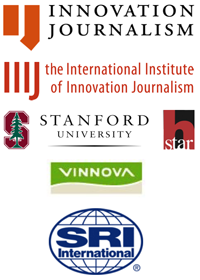For most scientists having a venture capitalist or a representative from a big company on the phone, calling to discuss investments in your baby-project, is a dream that rarely comes true. For Gunilla Jacobson, researcher in the Department of Chemistry at Stanford Univesity, investors are beating a path to her door.
Investor interest in her is so great that she tries to avoid them.
“I want to get more results before deciding how to commercialize this,” she says.
Dr. Jacobson works in the hot field of nanomedicine. She is one of many scientists exploring how minute nanoparticles could be used to deliver a drug to certain locations in the body. If successful, this technology could revolutionize, for example, cancer treatment.
Today’s chemotherapy treatments are limited by serious side-effects of toxic drugs that hit the wrong target and wipe out healthy cells.
“What you really want is a target-specific delivery where the drug only reaches the cancer cells, “ says Dr. Jacobson.
To achieve this, Dr. Jacobson is developing a nano-sized Trojan horse, which won’t attack until it’s inside the tumor. She encapsulates the chemotherapy agent into a biodegradable nanoparticle, which she subsequently covers with molecules designed to stick to cancer cells. When injected into the bloodstream, the particle will travel freely until it hits a tumor and sticks.
Eventually the cover of the particle will degrade and its toxic load will leak out within the tumor area.
There are many competing versions of this approach developed by scientists at labs around the US. They may use different covering materials and different production methods. The advantage of Dr. Jacobson’s system, she says, is that she only uses FDA approved substances, which increases the chance of getting the drug approved. Furthermore, the manufacturing method is scalable and does not involve any expensive or unhealthy organic solvents. “At the lab we are making milograms nanoparticles, but if needed we could easily start to make kilograms,” says Dr. Jacobson.
Not all scientists think of commercialization while designing new drugs. But Dr. Jacobson, 38 years-old, knows the harsh economic demands imposed by an industrial process. She also has experience working in the industry as well as at four different universities.
She started her carrier as a Ph. D. student at Uppsala University in Sweden. This was followed by post-doc studies at University of Texas in Austin. Then she moved to the famous Los Alamos National Laboratory in New Mexico. After four years at universities, she felt she was ready for industry. She moved to Phoenix and joined a start-up company, Supercritical Systems, Inc. (SSI), which makes equipment for the semiconductor industry.
“It was a big shock for me, but also a very valuable experience," she says. "There was a lot more pressure to deliver results, both financially and from customers."
But she loved business. “In small start-ups, it is a win or lose situation," she says. "It matters more what I do."
Her situation changed when SSI was bought by Tokyo Electron Ltd, a large Japanese company.
“Suddenly people said things like 'we have already tried this,' and it became very static,“ says Dr. Jacobson.
She moved to Stanford, where her mother -- a material scientist -- once worked. “It feels as if I have come home at last," she says.
Monday, March 17, 2008
Nano can Revolutionize Cancer Therapy
Subscribe to:
Post Comments (Atom)


No comments:
Post a Comment